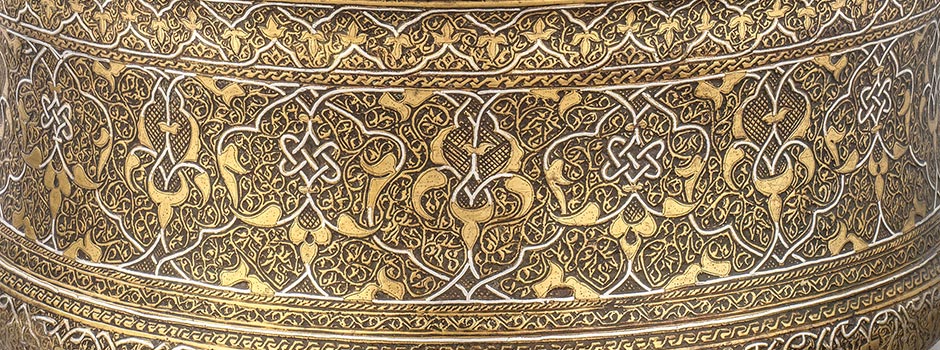
AN ONSITE AND ONLINE EXHIBITION (9 OCT 2020 - 10 JAN 2021) Precious and Rare: Islamic Metalwork from The Courtauld - Cultures in Conversation
Nov 04, 2020 FEATURE, Art Collection

Precious and Rare: Islamic Metalwork from The Courtauld - Cultures in Conversation, the exhibition at the History of Science Museum provides a modern-day interpretation on Islamic metalwork spanning the 11th to 16th centuries, with an accompanying online show and contributions by the local community. The exhibition explores how the intersections of cultures across the Islamic world influenced the creation of metalwork, some of the finest produced.
Part of a national tour supported by Art Fund and in partnership with the Subject Specialist Network for Islamic Art and Material Culture, the exhibition features a stunning array of objects on loan from The Courtauld, many never seen outside of London before this tour. These include a delicate candlestick made to a precise size and weight, rare brass bowls inlaid with silver and a 14th-century bucket for everyday use, all elaborately designed. They are on display alongside the History of Science Museum's world-class collection of scientific instruments from the Islamic World. The exhibition also examines the intricate designs and styles that made these metal pieces so renowned and imitated around the globe. Islamic metalwork is renowned for its exquisite craftsmanship.
_16th_century.jpg) Pair of candlesticks of engraved brass, Italy (Venice) 16th century. The Samuel Courtauld Trust, The Courtauld, London / Courtesy of the History of Science Museum
Pair of candlesticks of engraved brass, Italy (Venice) 16th century. The Samuel Courtauld Trust, The Courtauld, London / Courtesy of the History of Science Museum
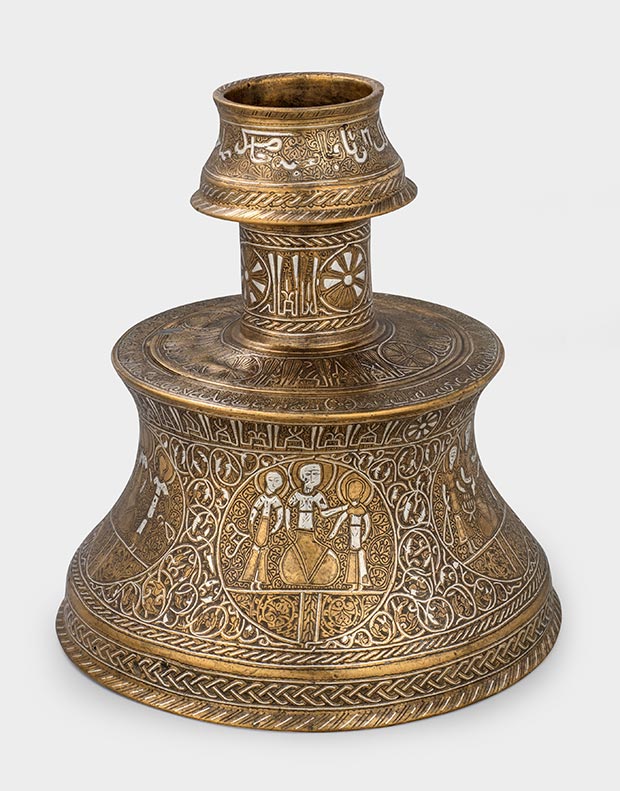 Candlestick of cast bronze engraved and inlaid with silver Eastern Anatolian, Turkey, late 13th century. The Samuel Courtauld Trust, The Courtauld, London / Courtesy of the History of Science Museum
Candlestick of cast bronze engraved and inlaid with silver Eastern Anatolian, Turkey, late 13th century. The Samuel Courtauld Trust, The Courtauld, London / Courtesy of the History of Science Museum
_late_15th_-_early_16th_century_.jpg) Bowl-shaped box with a cover of engraved brass, Mamluk (Damascus, Syria) late 15th - early 16th century, The Samuel Courtauld Trust, The Courtauld, London / Courtesy of the History of Science Museum
Bowl-shaped box with a cover of engraved brass, Mamluk (Damascus, Syria) late 15th - early 16th century, The Samuel Courtauld Trust, The Courtauld, London / Courtesy of the History of Science Museum
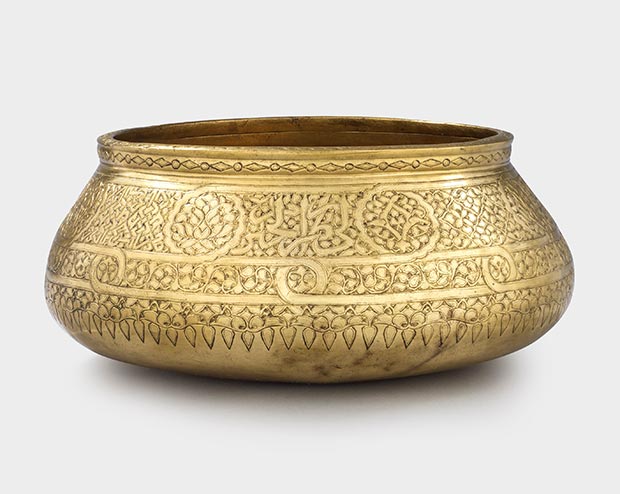 Bowl of brass, formerly inlaid with silver, engraved with floral decoration, Mamluk, late 14th or early 15th century, The Samuel Courtauld Trust, The Courtauld, London / Courtesy of the History of Science Museum
Bowl of brass, formerly inlaid with silver, engraved with floral decoration, Mamluk, late 14th or early 15th century, The Samuel Courtauld Trust, The Courtauld, London / Courtesy of the History of Science Museum
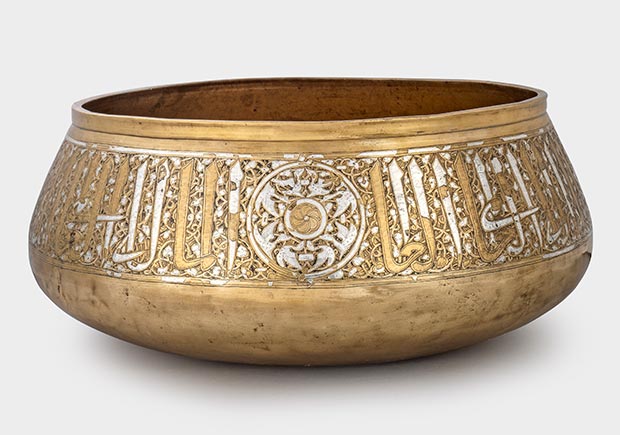 Bowl of engraved brass inlaid with silver; decorated with inscriptions of titles, Mamluk, 14th century. The Samuel Courtauld Trust, The Courtauld, London / Courtesy of the History of Science Museum
Bowl of engraved brass inlaid with silver; decorated with inscriptions of titles, Mamluk, 14th century. The Samuel Courtauld Trust, The Courtauld, London / Courtesy of the History of Science Museum
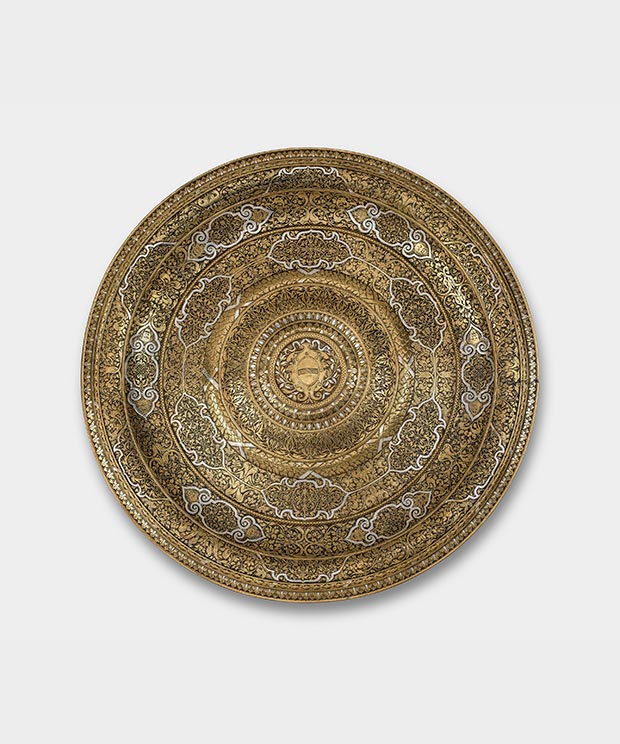 Dish of engraved high-tin bronze inlaid with silver, in the centre a coat of arms, Italy,16th century. The Samuel Courtauld Trust, The Courtauld, London / Courtesy of the History of Science Museum
Dish of engraved high-tin bronze inlaid with silver, in the centre a coat of arms, Italy,16th century. The Samuel Courtauld Trust, The Courtauld, London / Courtesy of the History of Science Museum
_or_Turkey_(Anatolia)_or_Mamluk_15th-16th_century.jpg) Bucket of engraved brass with silver inlay, Iran (North-West) or Turkey (Anatolia) or Mamluk, 15th-16th century. The Samuel Courtauld Trust, The Courtauld, London / Courtesy of the History of Science Museum
Bucket of engraved brass with silver inlay, Iran (North-West) or Turkey (Anatolia) or Mamluk, 15th-16th century. The Samuel Courtauld Trust, The Courtauld, London / Courtesy of the History of Science Museum
.jpg) Bowl-shaped box with a cover of engraved brass inlaid with silver, Mahmud al-Kurdi (late 15th century). The Samuel Courtauld Trust, The Courtauld, London / Courtesy of the History of Science Museum
Bowl-shaped box with a cover of engraved brass inlaid with silver, Mahmud al-Kurdi (late 15th century). The Samuel Courtauld Trust, The Courtauld, London / Courtesy of the History of Science Museum
The highlight of the exhibition is a woman's metal handbag, the only surviving example of its kind. It was made in the early 14th century in Mosul, northern Iraq for an important lady based in the courtly circles of the Ilkhanid dynasty. This handbag, known as the Courtauld Bag and decorated with images of eight musicians playing instruments, shows the incredible metalworking skills passed down through generations.
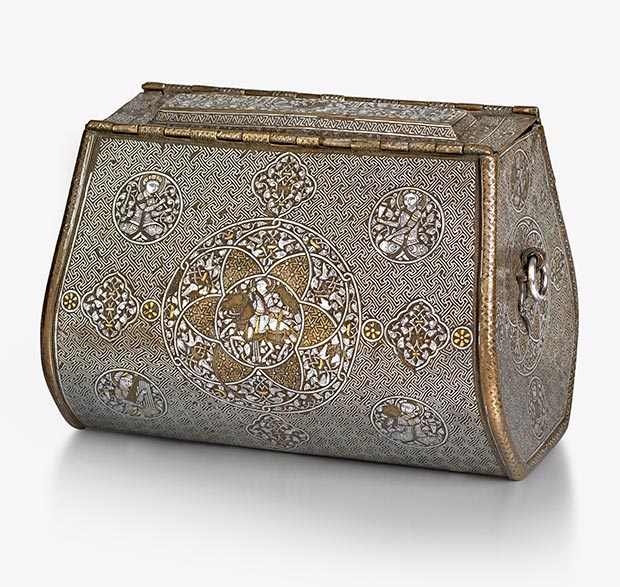 Metalwork bag, Mosul, Northern Iraq 1300 - 1330. Brass with silver and gold inlay. The Samuel Courtauld Trust, The Courtauld, London / Courtesy of the History of Science Museum
Metalwork bag, Mosul, Northern Iraq 1300 - 1330. Brass with silver and gold inlay. The Samuel Courtauld Trust, The Courtauld, London / Courtesy of the History of Science Museum
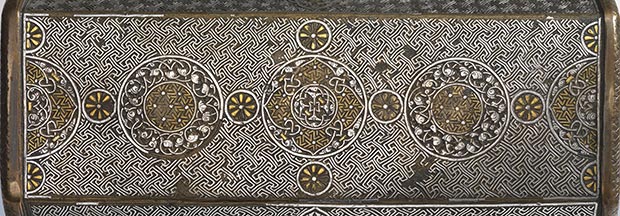 Metalwork bag, Mosul, Northern Iraq 1300 - 1330. Brass with silver and gold inlay. Detail. The Samuel Courtauld Trust, The Courtauld, London / Courtesy of the History of Science Museum
Metalwork bag, Mosul, Northern Iraq 1300 - 1330. Brass with silver and gold inlay. Detail. The Samuel Courtauld Trust, The Courtauld, London / Courtesy of the History of Science Museum
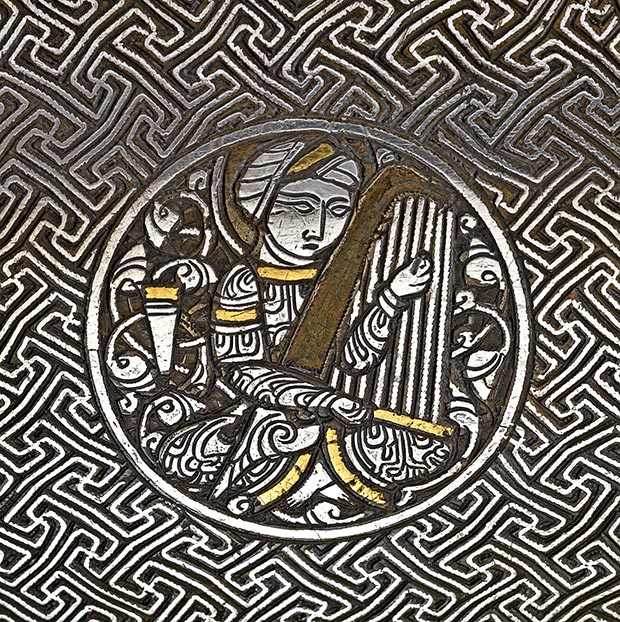 Metalwork bag, Mosul, Northern Iraq 1300 - 1330. Brass with silver and gold inlay. Detail. The Samuel Courtauld Trust, The Courtauld, London / Courtesy of the History of Science Museum
Metalwork bag, Mosul, Northern Iraq 1300 - 1330. Brass with silver and gold inlay. Detail. The Samuel Courtauld Trust, The Courtauld, London / Courtesy of the History of Science Museum
To ensure as many people as possible can experience the exhibition, the History of Science Museum has responded to the current climate by creating a full online exhibition that will also include objects and stories not seen in the physical exhibition. The Museum has taken a unique approach to the online exhibition by working with Oxford-based volunteers with a cultural connection to these objects, who provided their perspective based on their personal and cultural knowledge. The volunteers came to the UK as migrants from countries including Syria, Egypt, Iraq, Zimbabwe and Sudan. Many of the volunteers have been working with the Museum for some time as part of a project called Multaka, which means 'meeting place' in Arabic.
 Astrolabe with Lunar Mansions. Abd al-Karim, Syria, 1227-28 CE / Courtesy of the History of Science Museum
Astrolabe with Lunar Mansions. Abd al-Karim, Syria, 1227-28 CE / Courtesy of the History of Science Museum
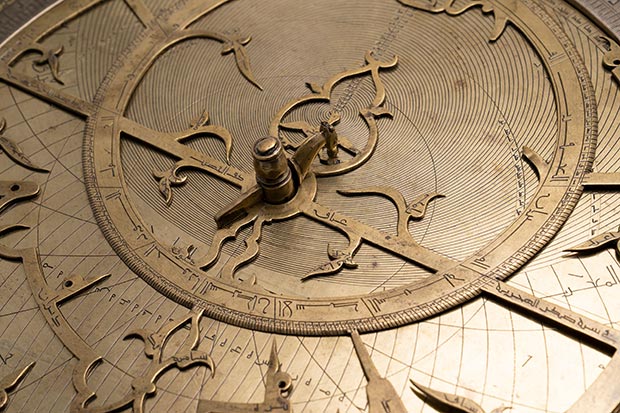 Astrolabe with Lunar Mansions. Abd al-Karim, Syria, 1227-28 CE, detail / Courtesy of the History of Science Museum
Astrolabe with Lunar Mansions. Abd al-Karim, Syria, 1227-28 CE, detail / Courtesy of the History of Science Museum
 Astrolabe with Lunar Mansions. Abd al-Karim, Syria, 1227-28 CE, back / Courtesy of the History of Science Museum
Astrolabe with Lunar Mansions. Abd al-Karim, Syria, 1227-28 CE, back / Courtesy of the History of Science Museum
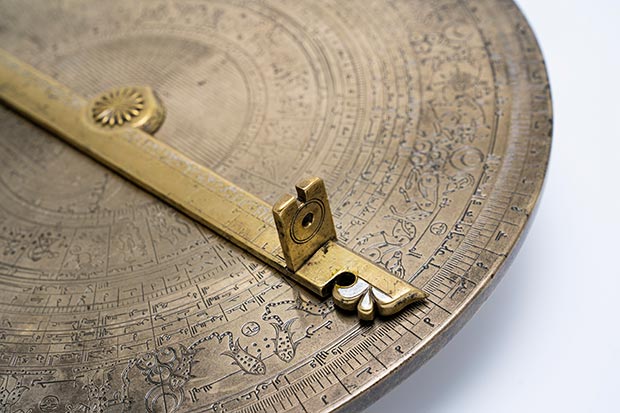 Astrolabe with Lunar Mansions. Abd al-Karim, Syria, 1227-28 CE, back detail / Courtesy of the History of Science Museum
Astrolabe with Lunar Mansions. Abd al-Karim, Syria, 1227-28 CE, back detail / Courtesy of the History of Science Museum
One volunteer, Jonathan Fruchter, has created an interactive digital programme through which online visitors can design their Islamic-inspired patterns. Jonathan said, "I was amazed by the intricacy of the patterns of some of the objects. I decided to digitize the pattern on the handbag and was inspired to create a symmetric-pattern-generating computer programme. The programme is based on the 'type' of symmetry most common in Islamic art and allows the user to design their Islamic-influenced repetitive patterns with just a few lines and brush strokes. Mathematics is usually perceived as intimidating and very dry. I think that this exhibition is a great opportunity to share a bit of my knowledge and show people that maths can be beautiful and fun!"
This approach provides a new way for visitors to understand and appreciate these objects. Moreover, the wealth of knowledge and understanding the volunteers bring has a lasting legacy: it is being added to the museums' database and shared with the community through multi-lingual events, tours, blogs and displays, but most importantly the museum's working practices have become more inclusive and collaborative.
_13th_century.jpg) Incense burner of pierced and engraved brass inlaid with silver, with images of the planets within roundels, Mamluk (Syria) 13th century. The Samuel Courtauld Trust, The Courtauld, London / Courtesy of the History of Science Museum
Incense burner of pierced and engraved brass inlaid with silver, with images of the planets within roundels, Mamluk (Syria) 13th century. The Samuel Courtauld Trust, The Courtauld, London / Courtesy of the History of Science Museum
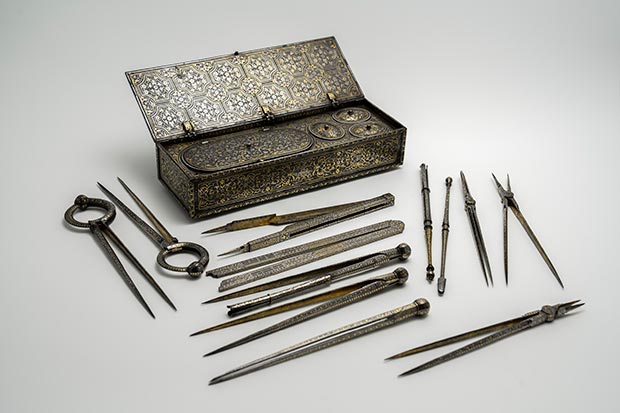 Set of Drawing Instruments. Italy, early 1500s CE / Courtesy of the History of Science Museum
Set of Drawing Instruments. Italy, early 1500s CE / Courtesy of the History of Science Museum
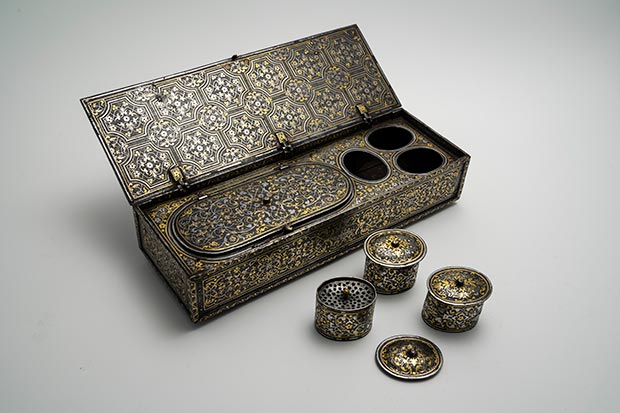 Set of Drawing Instruments. Italy, early 1500s CE / Courtesy of the History of Science Museum
Set of Drawing Instruments. Italy, early 1500s CE / Courtesy of the History of Science Museum
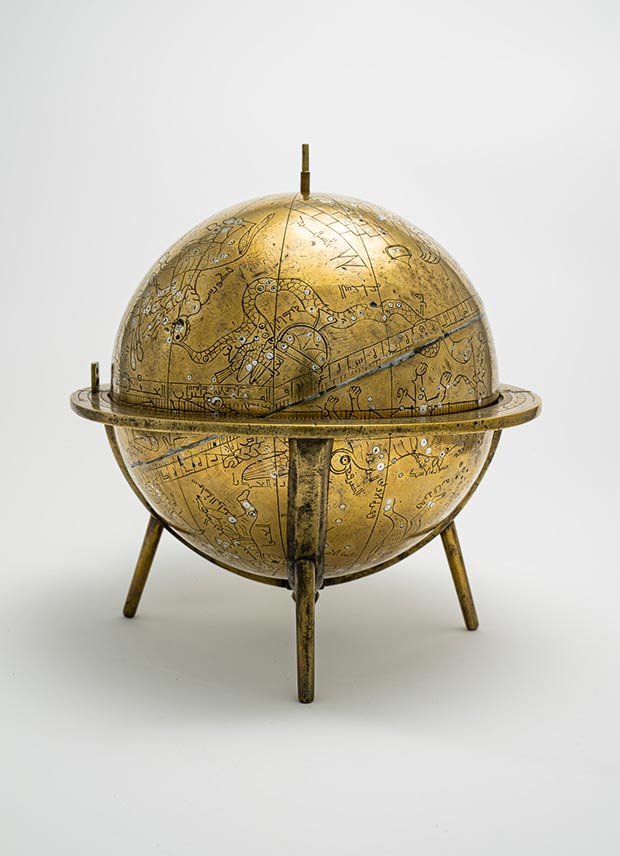 Celestial globe. Jafar ibn Umar ibn Dawlatshah al-Kirmani, Iran, 1362-63 CE / Courtesy of the History of Science Museum
Celestial globe. Jafar ibn Umar ibn Dawlatshah al-Kirmani, Iran, 1362-63 CE / Courtesy of the History of Science Museum
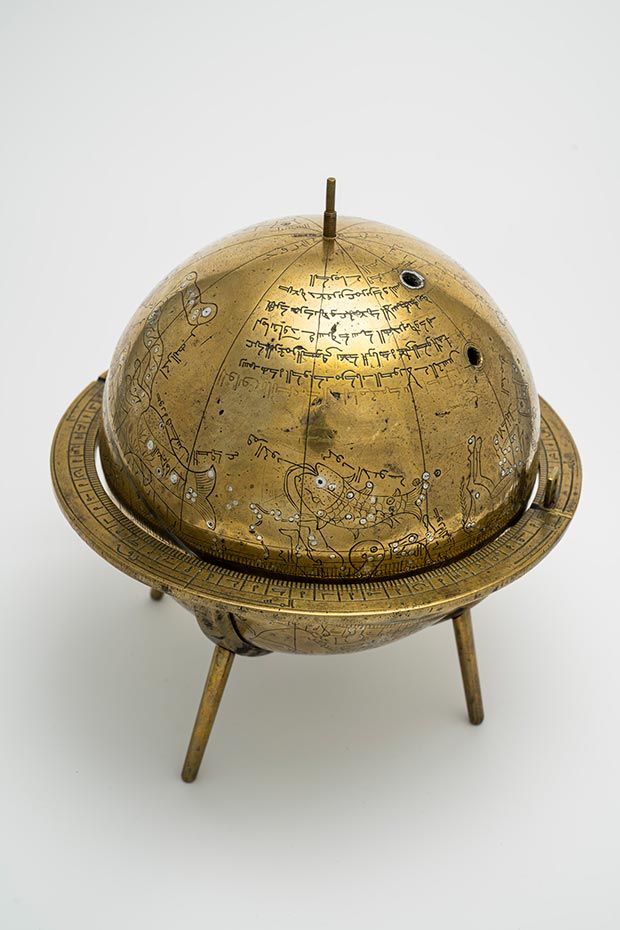 Celestial globe. Jafar ibn Umar ibn Dawlatshah al-Kirmani, Iran, 1362-63 CE, another view / Courtesy of the History of Science Museum
Celestial globe. Jafar ibn Umar ibn Dawlatshah al-Kirmani, Iran, 1362-63 CE, another view / Courtesy of the History of Science Museum
Dr Silke Ackermann, Director of the History of Science Museum, said: "Precious and Rare: Islamic Metalwork from The Courtauld gives us insight into the craft and the science of Islamic metalworking. Our interpretation of the exhibition beautifully reveals how ideas and stories have travelled across time and territory, language and medium. Work to create this exhibition took place through the COVID-19 pandemic, and we had to repeatedly pivot as we largely communicated through a new medium - online; it has certainly proved to be our most dynamic display yet. We are delighted by the contribution made by the Multaka volunteers and grateful for The Courtauld's generosity and their partnership - this collaboration has been an absolute joy, and we have learnt a huge amount in the process."
Dr Alexandra Gerstein, McQueens, Curator of Sculpture and Decorative Arts at The Courtauld said: "We are thrilled to partner with Oxford's History of Science Museum on the Precious & Rare tour and to be the first exhibition on display when the museum reopened to the public. The exhibition provides an opportunity for people to experience and enjoy some of the most treasured artworks from both The Courtauld and History of Science Museum's collections and to find out more about their fascinating history." The Cultures in Conversation online exhibition includes all the objects and stories from the physical exhibition, with opportunities to explore additional content and get close-up with more information.
The History of Science Museum houses an unrivalled collection of historic scientific instruments in the oldest surviving purpose-built museum building, the Old Ashmolean on Broad Street, Oxford. The present collection preserves the material of past science. As a department of the University of Oxford, the Museum has a role both in making this material available for study by historians and in presenting it to the visiting public. It offers a programme of special exhibitions, events, tours and school sessions with a fascinating history.
Comments
Add a comment